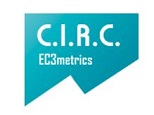La encrucijada de la metafísica tomista: la circularidad de la tesis de la causalidad recíproca entre el ser y la esencia
DOI:
https://doi.org/10.53439/stdfyt29.15.2012.173-183Keywords:
Thomas Aquinas, Giles of Rome, thomistic metaphysics, scholastic metaphysicsAbstract
Thomas Aquinas distinguishes the sum of determinations that specify an entity as such and the fact that said entity in fact exists in reality as two separate metaphysic principles. However, by defining the being as the other of the essence, the being itself tends to become a kind of essence that requires, just as the essence itself, to be placed in existence. This corollary was derived from the real distinction thesis back in the times of Aquinas by thinkers such as Giles of Rome and picked up though the Middle Ages until the times of Francisco Suárez. XX century Neo-thomism tried to elude this corollary by resorting to the argument of reciprocal causality between being and essence: the being would put essence into existence and, as the being is received, the essence would limit the being correlatively. However, the real distinction of between being and essence would not seem to avoid the being becoming, as such, an entity sui generis that consequently reproduces in itself the double structure of essence and being. This research seeks to analyze in detail the difficulties that arise from applying the reciprocal causality thesis as ground for the thesis of limitation of the being by the essence.

















